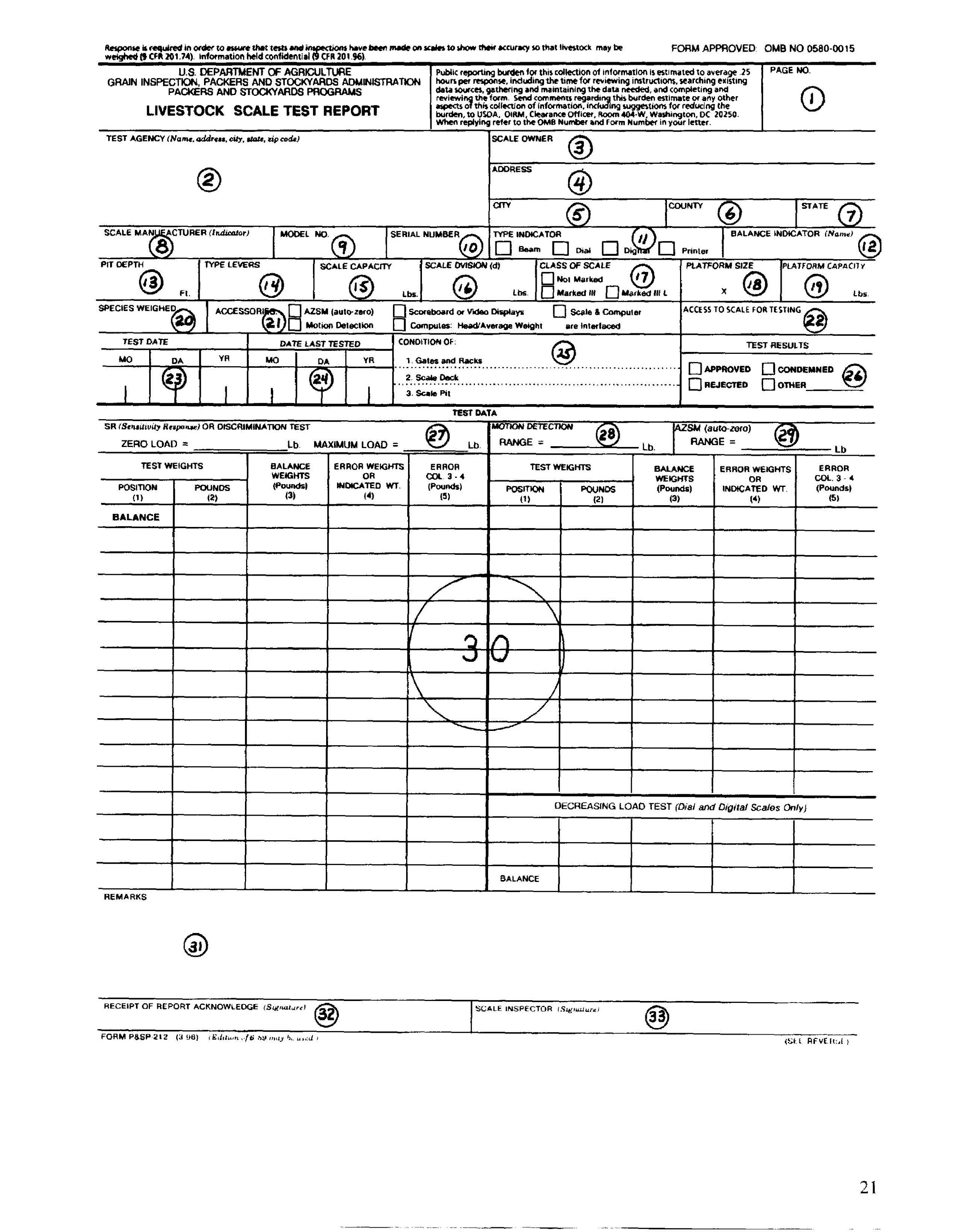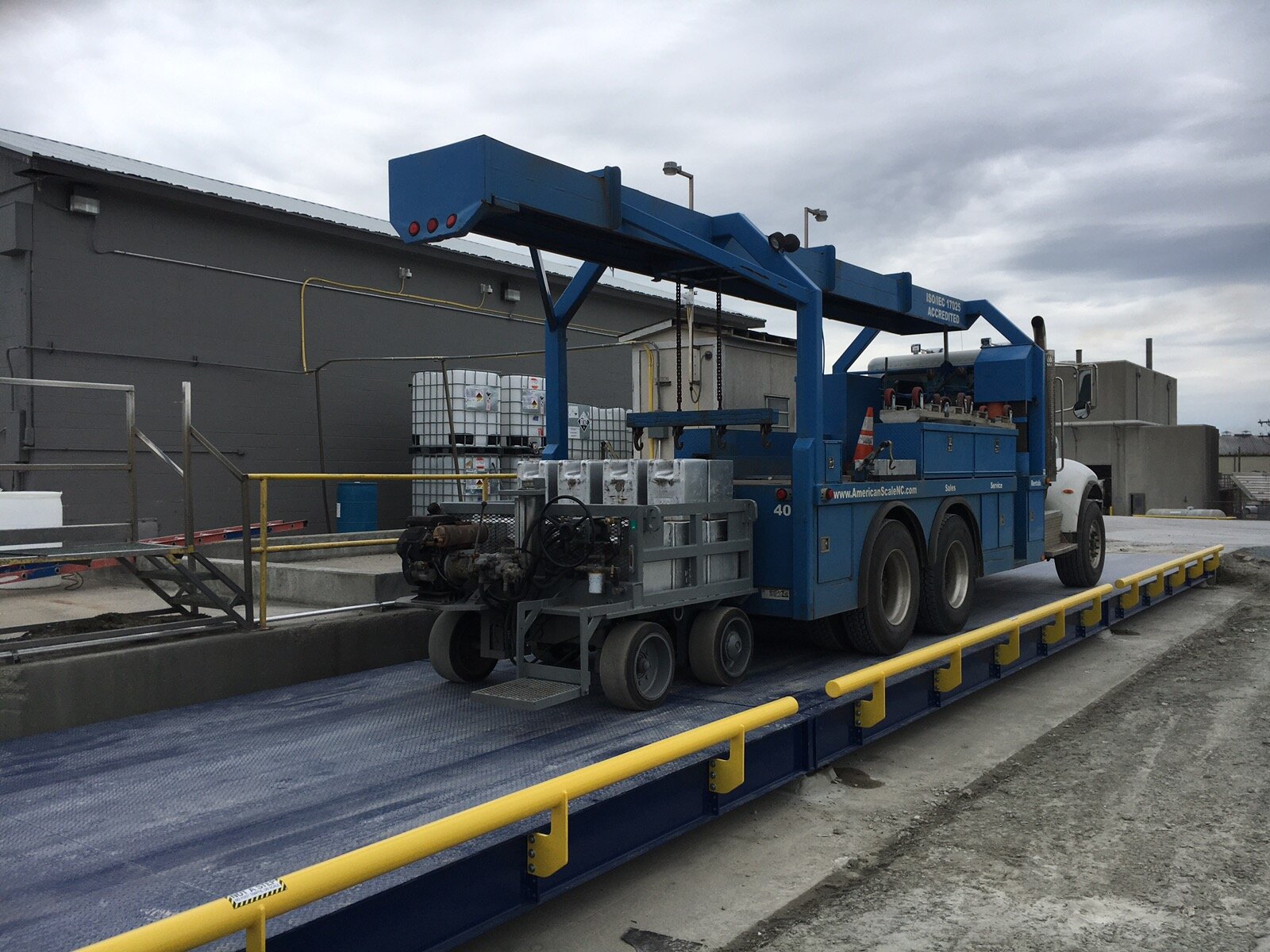Understanding the importance of calibrations.
Using a scale for an extended amount of time, especially in a business will require you to get your scale calibrated. Scales are not able to be accurate forever, there are factors that cause it to need calibrations periodically. Normal wear and tear occurs and over time, accuracy slips. It can degrade even quicker if the scale is exposed to electric or mechanical shock or is in a manufacturing environment with moisture, oils, metal chips, etc.
Calibration is the process of testing the scale, to ensure the level of accuracy you require. In a laboratory setting, where results are dependent upon exact weights, scale calibration is of particular importance. An inaccurate scale could significantly hurt your business. In processing and manufacturing, incorrect measurements could result in product quality issues, scrapped batches, or even a product recall. This guide will help give some insight to scale calibration, helping to create a plan of action and ensure that less issues involving an inaccurate scale.
How Does Scale Calibration Work?
Using a test weight on your scale is the standard to properly calibrating your scale. The test weight reading is recorded, and if the weight readings match the standards applied or fall within the calibration tolerance, the scale does not need any adjustment. If the weight readings do not match or fall within the tolerance, service will likely be needed to restore the scale to the acceptable state of accuracy.
While an instrument may be capable of measuring a particular range of weight, it may or may not be calibrated for that entire range. Instead, there may be a calibration range that’s chosen, which ranges from zero to a maximum weight of your choosing (also known as the span). Once the calibration range is defined, the calibration is done at several points from zero to span to ensure high accuracy.
Factory Calibration
When you purchase a scale, it often comes with factory calibration, which means that it was calibrated at the facility before you got the scale. In the few days that have passed since it left the factory, you might assume that your scale is delivered calibrated and ready for use, right? Wrong. The location of the factory and your location are two different places – with two different elevations and therefore, the on-site calibration is the only way to ensure your scale is accurate where you intend to use it.
If you do decide you want to have your scale calibrated once it arrives, then a third-party scale company is your best option. Your ultimate goal is to restore your scale to its original, optimal accuracy state, so the details matter. Some scale dealers will also offer calibration services, like American Scale, will not only calibrate the scale, but also make adjustments and perform repairs as needed to get the deviation from the mass standard back within tolerance.
How Often Should You Calibrate Your Scales?
How often you calibrate your scales depends on a few different factors; manufacturer’s recommendations, how often you use the scales, the environment they’re in, and how essential an exact weight is to your business. Some are calibrated once per month, others are only calibrated once per year, while some are even spot checked daily for accuracy.
After considering these factors, it’s determined that somewhere in the middle —certified calibration once per quarter with a weekly user spot check is ideal to ensure quality control of scales that are used fairly often. However, your needs may vary based on the information below.
Always consult the manufacturer’s recommendations first. Manufacturers should have a recommendation for the frequency of calibration, and since all scales are made differently, it’s usually safe to assume the manufacturer knows best.
If your scales are used multiple times throughout the day, every day of the week, normal wear and tear will occur faster than in scales that are used a few times per week. Therefore, if you use these scales more frequently, they should be calibrated more frequently.
The surrounding environment also plays a role. For example, if your scale is in an area that contains dust, fluids, or other substances, your scale could have a buildup of these substances that interfere with the performance of the scale. If you have the scale located in a place where there are vibrations, static electricity or mechanical shock, scale accuracy can suffer.
In general, you should also consider a more frequent calibration to ensure these substances and other work environment factors are not getting in the way of getting a precise weight.
Calibrations are done at a variety of frequencies, depending on a variety of factors. It’s important to note that if your equipment is frequently calibrated and almost always needs adjustment or repairs, it could be a sign of a bigger issue.
While the frequency of calibrations depends upon use, the rapid deterioration of accuracy warrants additional troubleshooting.
Once you’ve determined the appropriate frequency for your scales, you should look into signing a service plan with a calibration company. Many companies, like American Scale will work with you to learn more about your process and then create a maintenance plan tailored to you and your equipment
What Is Calibration Tolerance?
Calibration tolerance is defined by the International Society of Automation (ISA) as “permissible deviation from a specified value; may be expressed in measurement units, percent of span, or percent of reading.“ When it comes to scale calibration, tolerance is the amount the weight reading on your scale can differ from the nominal value of the mass standard that has optimal accuracy. Of course, ideally, everything would match up perfectly. Since that’s not the case, tolerance guides ensure that your scale is measuring weights within a range that will not negatively affect your business.
While the ISA specifically states that tolerance can be in measurement units, percent of span or percent of reading, it’s ideal to calculate the measurement units. Eliminating the need for any percentage calculations is ideal, as those additional calculations only leave more room for error.
The manufacturer will specify accuracy and tolerance for your particular scale, but you should not use this as your only source to determine the calibration tolerance you will use. Rather, in addition to the manufacturer’s specified tolerance, you should consider:
Regulatory accuracy and maintenance requirements
Your process requirements
Consistency with similar instruments at your facility
What Is Legal-for-Trade Calibration?
Commercial scales require legal-for-trade calibration. That means the scale needs to be calibrated according to the standards found in “Specifications, Tolerances, and Other Technical Requirements for Weighing and Measuring Devices” — also known as “Handbook 44.” This comprehensive list of requirements is mandatory for all scales used for commercial purposes. A new version is published every year by the National Institute of Standards and Technology (NIST).
Do I Need Legal-for-Trade Calibration?
If you use your scale for commercial purposes, you need legal-for-trade calibration. For example, at the grocery store, your lunch meat and cheese is weighed on a scale and is sold to you at a price determined by that weight. That grocery store scale is an example of a commercial scale.
Commercial scales require legal-for-trade calibration. A state weights and measures inspector will follow up to ensure that your commercial scale has proper calibration. A device found to be out of tolerance by a state inspector is generally tagged and taken out of service. To avoid the problems associated with a device being found out of calibration by a state inspector, owners of commercial scales should have them calibrated and adjusted periodically to keep them in proper operating order.
Do I Need to Register My Weighing Device?
Yes. Many states require that you register commercial scales with the state. Also, you must make sure that the state you plan to use the scale in approves of the purchase. Most states accept scales that are National Type Evaluation Program (NTEP) approved. NTEP-approved scales get a Certificate of Conformance (CC or CoC), showing its approval. This document is usually in the form of a metal plate or tag on the scale with the make, model and capacity information.
The state will inspect and test the scale then review the results. As long as your scale has the Certificate of Conformance, and the scale performs to all of the relevant standards and tolerances in Handbook 44, you will pass inspection. If your device is out of tolerance, the state weights and measures official will not adjust it to bring it back within tolerance. Rather, you will be required to repair and adjust the scale. Only a licensed and professional scale calibration and repair company like Precision Solutions can do this.
Closing Words
Acuuracy is paramount when it comes to scales and weighing, an innaccurate scale can really cuase you a lot of lost time and money, if not remedied quickly. Remeber that in the long run if you have an innaccurate scale then you will lose a lot of potential profits. Consider how important an accurate weight is to your business. If your company can’t afford to have even the slightest inaccuracy in weight, it’s likely that more frequent calibrations will be necessary.
At American Scale we strive to bring you informed and useful content on all things scale systems related, including products from the top scale manufacturers. Be sure to check out our truck scale articles about truck scale foundation or how much do truck scales cost. We even have a guide to warranties. To learn more about bench scales, it would be good to check out our other articles such as “Bench Scale Basics'' and “How Much Does A Bench Scale Cost?”. These articles will help with the basics of bench scale ownership. Also, take a look at our“Common Problems With Bench Scales'', to help prolong the lifespan on your scale.






